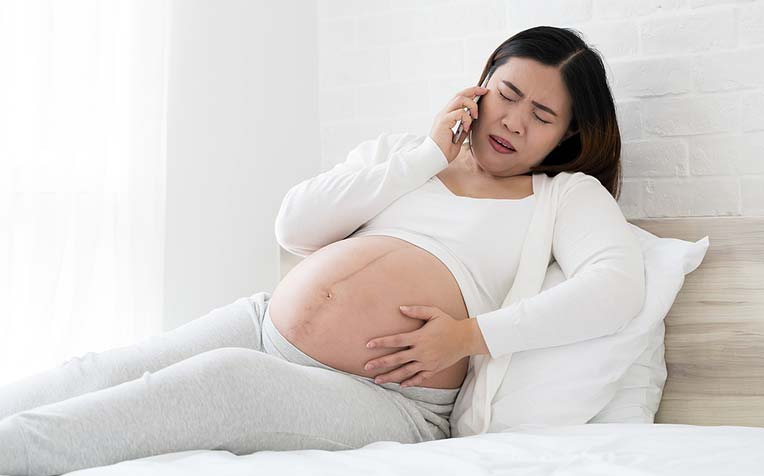HealthXchange will NEVER ask you to transfer money over a call. If in doubt, call the 24/7 ScamShield helpline at 1799, or visit the ScamShield website at www.scamshield.gov.sg.

Braxton Hicks contractions are irregular and do not cause dilation, while real contractions are regular and become more intense and frequent.
"For a first-time mom, recognising contraction pains is challenging. On one hand, you desire to go hospital in time but certainly don't want to be embarrassed for false labour pains."
The Department of Obstetrics & Gynaecology at KK Women's and Children's Hospital (KKH), a member of the SingHealth group, explains the difference between Braxton Hicks contractions and real contractions.
False contractions (aka braxton hicks pains)
Most women experience false Braxton Hicks contractions in the late trimester, typically after 36 week. These are rehearsal contractions of the womb for the D day. They feel real although they are not real labour pains. The difference is that they are irregular, and will not cause dilation.
How to tell real contractions?
In comparison, real contractions are regular and become more intense and frequent. Labour pains begin briefly and more than 30 minutes apart, but will get closer and last longer. A real contraction lasts about a minute. Once you have established contractions about 5 minutes apart and persistent (>2 hours), it's time to get ready. Chances are that you are truly in labour. Congrats! This is the D day.
5 Warning signs of labour
1. You feel like period cramps
The real contractions feel like your usual menstrual cramps but much worse. The crampy sensation gets progressively intense and your bump feels hard like a rock.
2. Regularity is important
Labour pains are irregular at early phase. It is recommended that you keep active and ambulate lots if the pains are bearable.
3. Your water-bag burst
The intense contractions may burst your water-bag. Once broken, you will experience a gush of amniotic fluid. Put on your thickest maternity pad and head to the hospital.
4. Mucous plug
You have some unusual vaginal discharge. Mucous plug is sticky and blood-stained. This is due to the dilation of cervix. Don't worry as this is a natural process of labour.
5. Heaviness or pelvic pressure
You may feel some heaviness at your pelvis and experience lower back pain. This is due to the baby's head engaging into the pelvic inlet. Hopefully, labour will be soon!
Ref: M19
Contributed by
Related Articles
Conditions & Treatments
Public Events
Get the Health Buddy App
© 2025 SingHealth Group. All Rights Reserved.


















 Get it on Google Play
Get it on Google Play